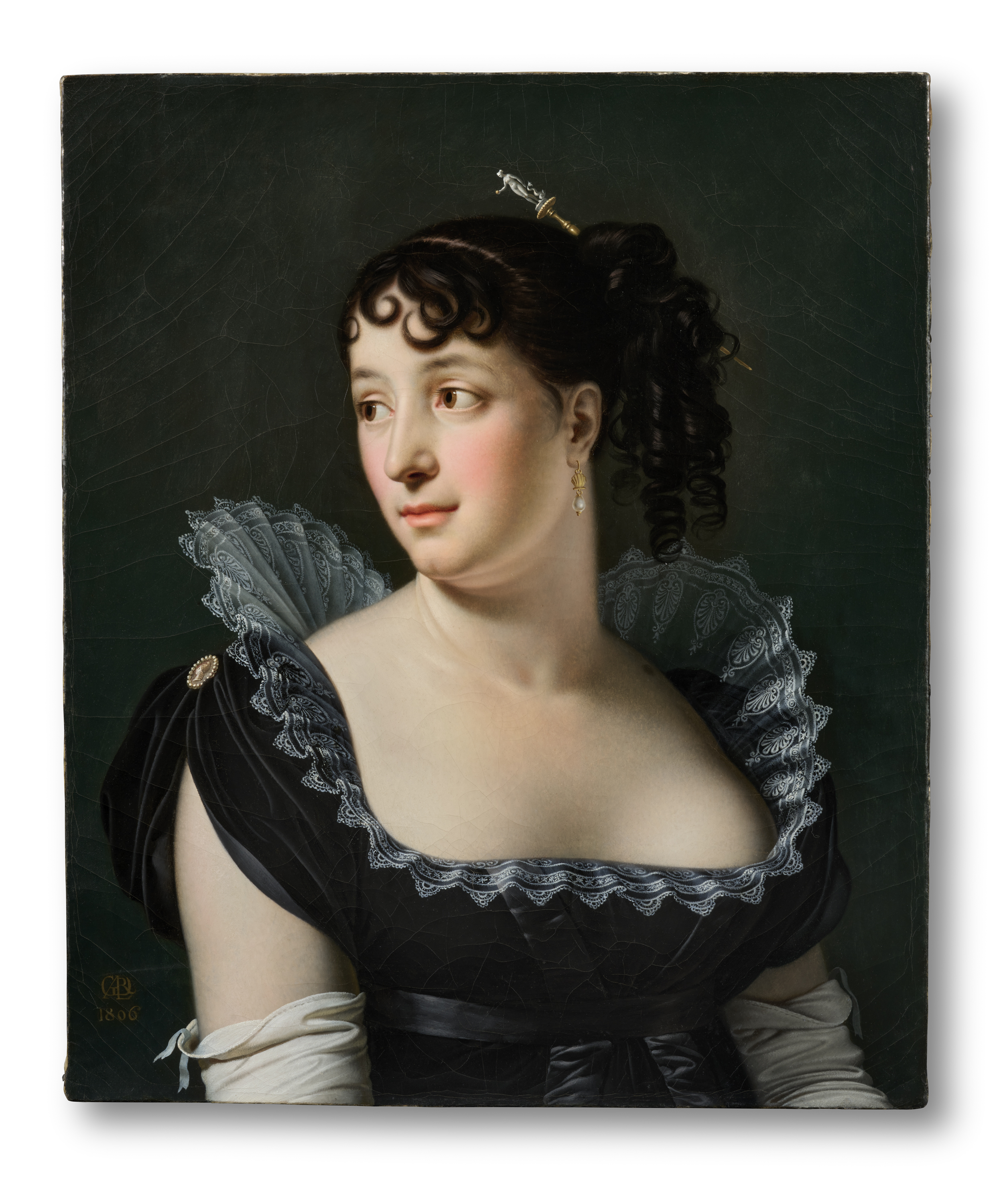
This elegant portrait comes from Château de Villepreux, the seat of the Bertin des Veaux, a distinguished noble French family whose members served as politicians and generals in the French army during the Orleans kingdom and the empire of Napoleon III. Among the family’s most illustrious members was Louis François Bertin des Veaux (1771–1842), an exchange trader, banker, co-director of the Journal des Débats, member of the French parliament from 1820 to 1831 and member of the Legion d’Honneur, who was elevated in 1832 by Louis Philippe d’Orleans to the honour of Pair de France. In 1798 he married Augustine Bouquet and eight years later, in 1806, he commissioned the present portrait of his wife from Anne-Louis Girodet-Trioson.
In the first decade of the nineteenth century, Girodet was at the height of his career. After a first period of study in the studio of Jacques-Louis David in 1789, he won the Prix de Rome. Girodet lived in the Eternal City from 1789 until 1793; at the end of his Italian sojourn he painted his first masterwork, the Sleep of Endymion (Musée du Louvre, Paris) in which he displayed his affinity with the new romantic taste of the day. This idiom became increasingly apparent in his works of the following years, including Malvine Dying in the Arms of Fingal (1802) and the Burial of Atala (1808), which, like the Endymion, are accented with a palpable eroticism. In the same years, Girodet also became one of the favourite portrait painters of the Bonaparte family. Around 1800, he executed the iconic Napoléon Bonaparte, Premier Consul (Palais de l’Elysée, Paris), and in 1806, the same year as the present painting, the Portrait of Hortense de Beauharnais, Queen of Holland (Rijksmuseum, Amsterdam).
In the portrait of Madame Bertin de Veaux, Girodet depicts his sitter in a low-cut black gown, cinched in at its fashionably high waist, with a lace collar à la Médicis, in perfect accordance with the style Josephine Bonaparte had imposed on court dress of the period. The short sleeves are gathered and fastened with an antique cameo brooch, revealing the creamy skin of the sitter's bare arms and the folds of her long ivory gloves, tied with delicate ribbons. The subtle play of light and shadow invites the eye to wander over the curves of her décolleté, framed by the daintily rendered yet magnificently expansive collar. These rippling rhythms may likewise be perceived in her elegant coiffure, marked by the accroche-coeurs, which curve delicately across her forehead, and the 'English curls' into which the rest is piled, held in place by a dramatically angled hairpin embellished with a figure of Venus holding the golden apple, seemingly proffering it to Paris, whose profile, distinguished by his Phrygian cap, features on the antique cameo brooch fastening her sleeve. Her earring, with a pearl suspended from a golden shell, perhaps also alludes to the goddess of love, who was borne ashore upon a shell following her birth.
In this beautifully preserved and unlined work, which is presented in its original Neoclassical frame, Girodet demonstrates his virtuoso skills in rendering texture, from the meticulously executed embroidered collar to the metallic sheen of the jewellery, from the sumptuous textiles of gloves and gown to Madame de Veaux’s pearly skin. Through the use of an economical palette, the artist created and maintained a subtle yet highly effective balance between these many decorative details and the more general overall harmony and tranquility of the picture, exemplified in the sitter’s face, turned to the left, bathed in light, and romantically gazing already into the distance.
Louis François Bertin des Veaux was an avid collector and an active patron of the artists of his day. Paintings and drawings by Greuze, David and Ingres were found in his collection, and at the very height of his career, in 1831, he commissioned Ingres to paint his own portrait, which in 1897 entered the collections of the Louvre and which is universally considered to be one of the great masterpieces of the French portraitist.